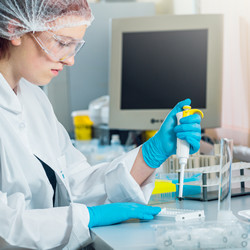Receptor structure-function relations
All biochemical processes that take place within cells are characterised by exceptional specificity and efficiency. Proteins are often the major players in these processes and their architecture determines their binding partners. Understanding the positioning of functional groups within proteins is of fundamental importance to revealing protein activity. G-protein coupled receptors (GPCRs) are a group of transmembrane proteins that can receive a signal from the outside and relay it within the cell. This message (lipid, hormone or neurotransmitter) eventually translates into a cellular or physiological response. To reveal the general principles of GPCR structure-function relations, the EU-funded NMRGPCR (Structure and dynamics of G protein-coupled receptors by NMR spectroscopy) project utilised NMR spectroscopy. This method provides both structural and dynamic information on biomolecules at atomic resolution with minimal invasiveness while closely replicating natural conditions. Researchers at the Paul Scherrer Institut in Switzerland employed a successful mutagenesis strategy to express thermostabilised recombinant GPCRs in the inner membrane of E.coli or in cytoplasmic aggregates known as inclusion bodies (Ibs). Purification from Ibs proved rather challenging despite exploring a number of various approaches including the use of detergents, ligands and fusion peptides. Expression in the membrane was more successful and the purified receptor was tested for its quality through a ligand-binding assay before being radioactively labelled for NMR analysis. Overall, the NMRGPCR study performed a thorough optimisation of the conditions and procedures necessary for purifying GPCRs for structural analysis. The generated tools will undoubtedly prove essential for future studies in the structure-function relations of cellular receptors.
Keywords
Receptor, structure, function, GPCR, NMR spectroscopy, E.coli

